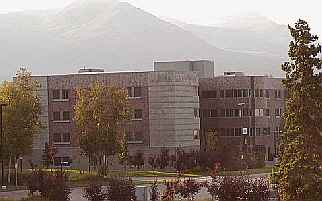History
The University of Alaska Anchorage began its journey inside of a high school in Alaska as Anchorage Community College. Established in 1954, Anchorage Community College opened using the facilities of Anchorage High School during the evening hours. As time passed and more students enrolled, the community college became Anchorage Senior College. In 1969, the college began to teach upper-division classes to students. Soon after, the college became a four-year institution named University of Alaska Anchorage (UAA) in the year 1976. The merging of Anchorage Community College and the rural extension units took place in 1987 to create the present institution.


